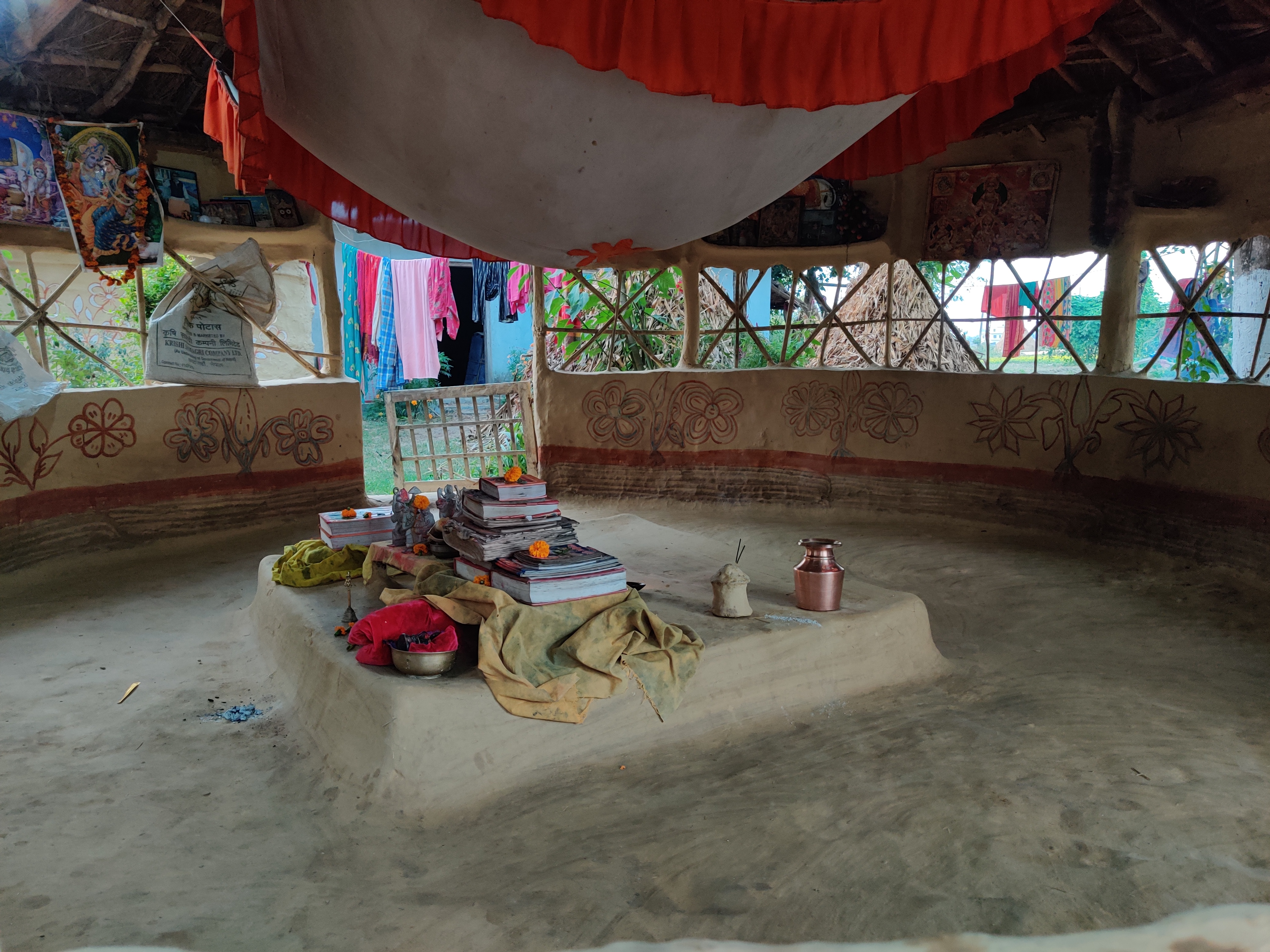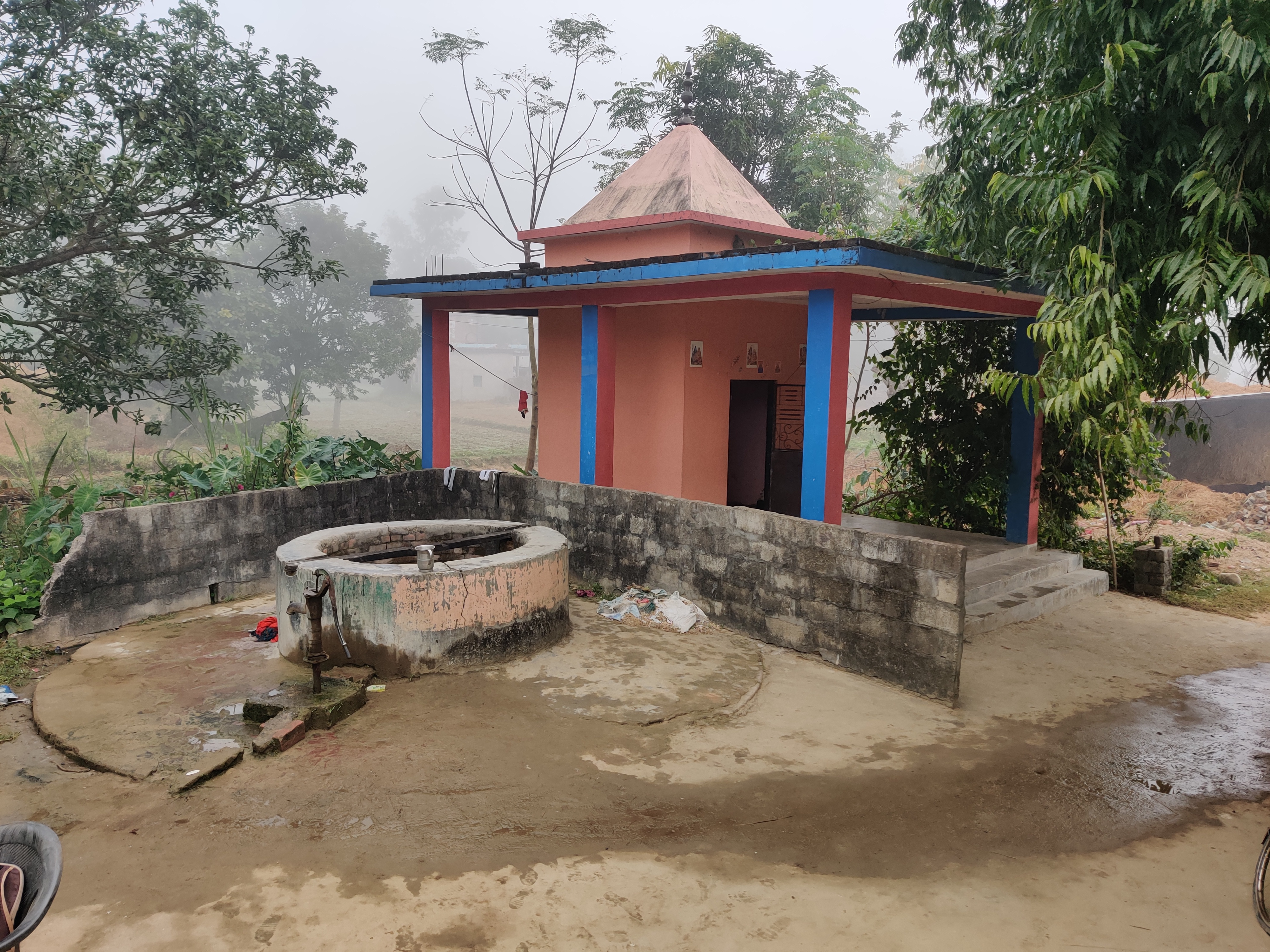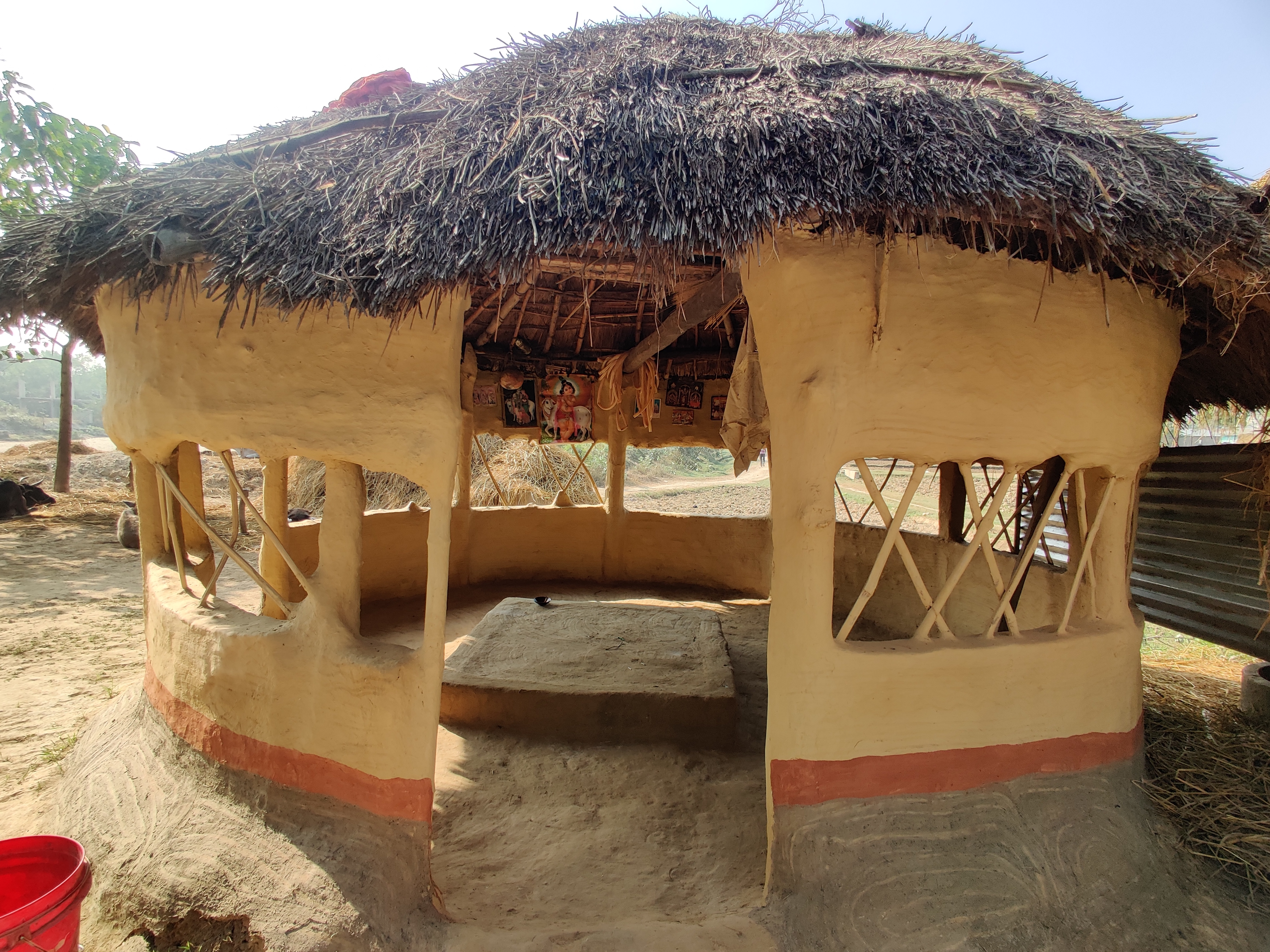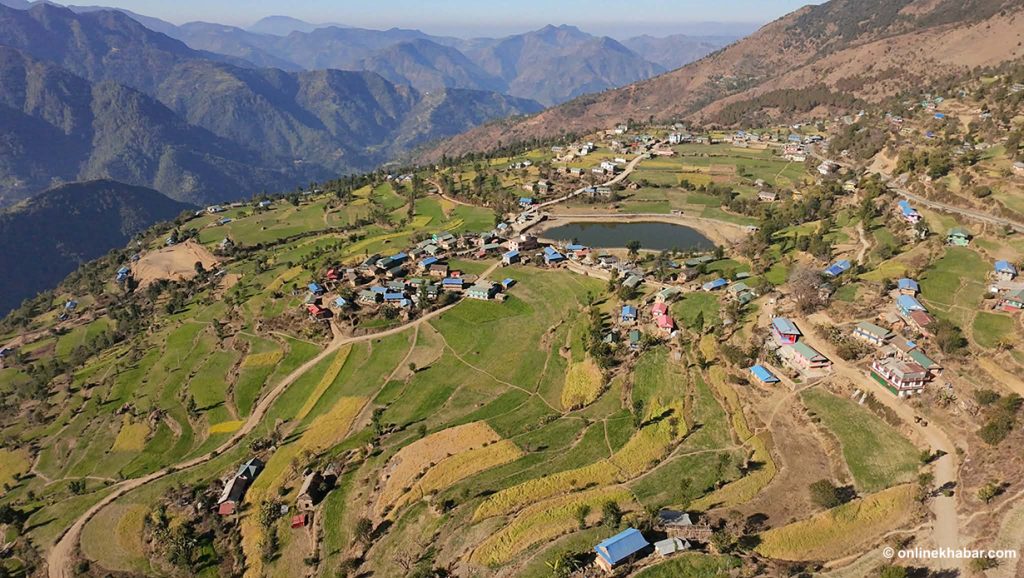
During my recent trip to Dang, I noticed hut-like structures in front of various residences, standing alongside concrete and mud houses. These structures did not have doors or windows and were open. I was curious and wondered about the purposes these structures served. They were present in some homes while absent in others.
Families that had these huts told me that they were referred to as saptah mandap. These unique huts are specific to the Yadav communities in the area, and each family has its own stories to share about this cultural practice.
What are saptah mandap?
Dang is home to several clusters of communities which rely on agriculture and animal husbandry. Among these communities, the Chaudhary and Yadav groups stand out as the majority. Notably, the construction of the saptah mandap is a distinctive feature found specifically in the houses of the Yadav community.
“In this region, Yadavs are the ones who are more culturally and socially active. We have many cultures and saptah mandap is one of them,” says Dev Raj Yadav, of Parhana village.

Dev Raj built the saptah mandap in 2018 when his father completed his tirtha yatra (pilgrimage).
“It is usually built after the wish(es) come true or after one successfully completes a specific task. We built this after father came back from his pilgrimage and with the hope that our family will continue to stay together in the near future too,” he says.
Dev Raj says building the saptah mandap usually is coupled with holding a puja and reciting the Bhagavad Gita.
“We call our families, relatives, neighbours and well-wishers to be a part of the feast. It usually is held for about seven to nine days. It is a really big affair,” he says.
These saptah mandap are usually made in chimtailo mato, giving them this creamy off-white muddy outlook. Constructed with bricks and strengthened by sturdy tree branches, the mud plays a crucial role in securing and binding the structure. To provide roofing, all these structures are uniformly covered with straw.
Actively involved in the decoration of the structure is Yadav’s daughter Lila. Lila, who is studying in sixth grade, has decorated the outer face of the structure with different elements like flowers and birds.
“In my free time–during the Dashain-Tihar holidays–I just made what I liked. I drew the flowers and birds around the saptah mandap and around the house too,” says Lila.
These decorative elements are made with the diluted rato mato (red clay) and limestone that they make at home. But they can also have a simple outlook.
Though these elements do not have any meaning and are done to decorate only, the father says, it does represent peace, harmony and prosperity in its own way.
But not all of them are built the same.
For the family

Most saptah mandap are constructed for the family, according to the locals. Another Yadav family mentioned that they, too, had built a saptah mandap for their own use.
“After father completed this tirtha, we built the structure,” says Daya Ram Yadav of Parhana.
As a manifestation of their faith, many individuals appear to construct these structures in celebration of familial or personal achievements. However, the significance of the saptah mandap extends beyond such instances.

The families share that they feel more gratitude towards life and their family bonding feels much stronger. All the families who have built the saptah mandap seem to live together in a joint family.
It is their general belief that building this structure keeps the family together for longer. Anurag Yadav has four generations living together, and Daya Ram shares his home with 20 people.
These structures also keep their spiritual belief strong as the families make sure to do their nitya puja (daily ritual) twice a day. They also, if possible, organise another saptah puja, together with the reading of Satyanarayan Katha or Bhagwad Gita.
Diverse features

The common outlook of this saptah mandap is its distinct circular shape. When people here decide to make these, they usually go for the same look. However, the locals say, it is not mandatory that every household make them.
The inside of the saptah mandap can also have different designs or decorations. People are free to choose their preferences. However, those who decide to construct the saptah mandap often decorate it in the traditional style with a clay background and a line of rato mato.
Inside the saptah mandap, a square platform is usually present, serving as the space for puja and hawan/hom rituals. Interestingly, this square platform is a common sight in Yadav households, even independently of the saptah mandap, highlighting its significance in their culture.

Anurag says while people do make these structures, it is not compulsory to construct them.
“Families make this by choice. Those who want to and have the money and space build it. There is no specific time of the year or the time in one’s life that they have to make this. It is again purely out of free will.”
However, he adds, they refrain from observing the rituals during the Nepali months of Shrawan, Bhadra, and Ashwin.




















